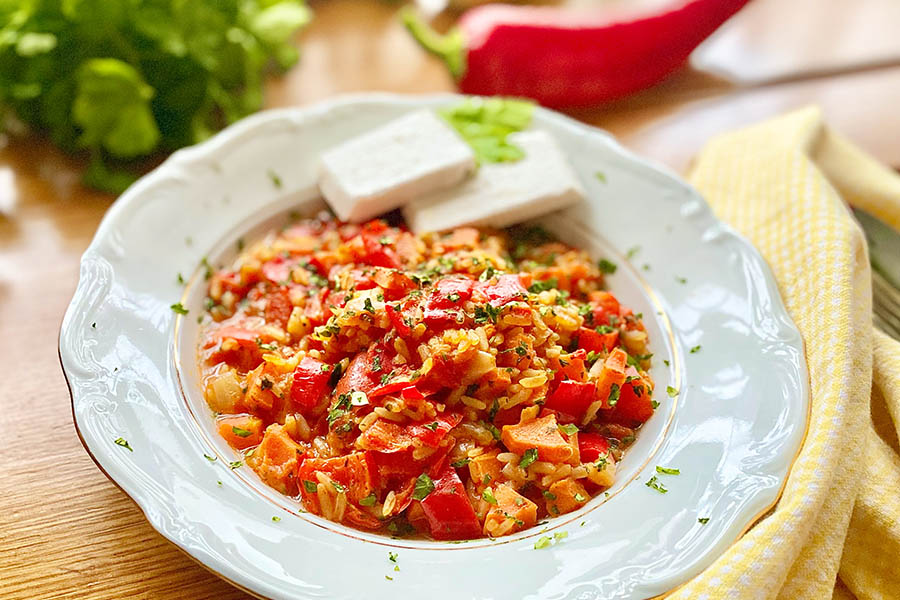Traditional Balkan vegetable stew.


Traditional Balkan vegetable stew.
The name of this traditional Balkan vegetable stew and perfect summer dish comes from the word “satara”, meaning “cleaver”, in reference to all the ingredients being chopped into small pieces. It is sometimes called “Balkan Ratatouille”, though the cooking method differs. By default vegan, Sataras is a firm favourite of guests at my dinner parties and supper clubs. Full of peppers and tomatoes, it is a lovely light meal in itself or a perfect side dish with any Mediterranean style feast. My recipe for Sataras comes from my dear late maternal grandmother, Elizabeta Zelenika (nee Jinek) who in turn learnt it from her own mother, Emilija, in today’s northern Bosnia and Herzegovina. It is also a common dish across neighbouring Croatia, Serbia, and Montenegro, with almost as many variations as there are cooks.

For best results, use thin skinned peppers that are common in Mediterranean and Turkish cuisine (see photo below). I buy mine from my local Turkish supermarket, where they are available year-round. If you can’t find them, regular bell peppers will also work. As well as making it to eat fresh, you may also preserve Sataras. To do this, omit the rice and simply portion it into sterilised jars once it has finished cooking. It makes an outstanding relish that is delicious all year round.
Ingredients
450g peppers, mixed colours
2 carrots
2 tomatoes
1 medium-large onion, peeled
1-2 cloves garlic, finely chopped
3 tablespoons cooking oil
1 tablespoon tomato puree
60g long grain rice (optional, see note) *
Parsley, chopped
250 ml stock or water
Salt and black pepper, to taste
1 teaspoon Vegeta seasoning (optional; add more salt and/or stock cube if not available)
Instructions
*Note: Rice is optional in Sataras; some people insist it is not traditional and refuse to add it. My grandmother always did and we enjoy how it joins the other ingredients together. If you don’t want to use rice, reduce the cooking time and add only 100ml stock or water.
